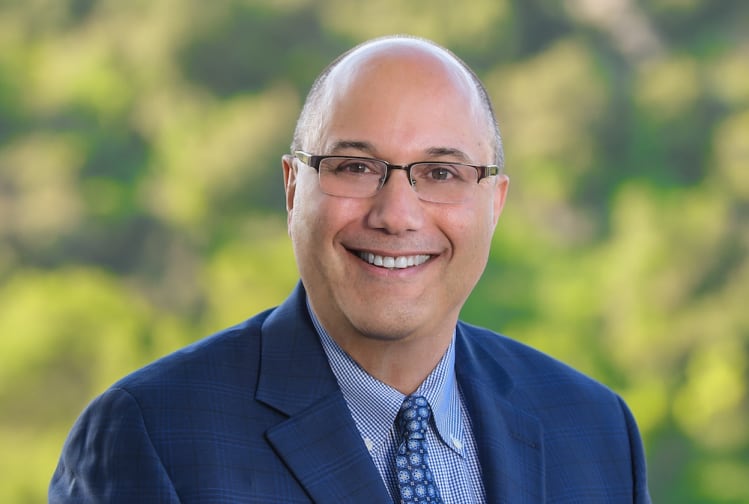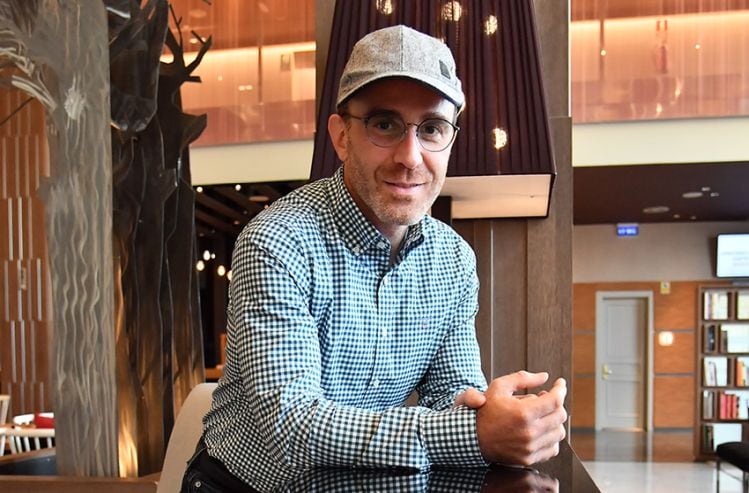One of the top-funded players in the nascent cultivated meat space - raising $347m in its series B round last year – Believer Meats (which changed its name just after we recorded this video in Rehovot, Israel last week) deploys Non GMO technology developed by biomedical engineer Professor Yaakov Nahmias that it claims helps it achieve higher-density cell cultures and more efficient use of media than rivals in the nascent space.
The firm – which is finalizing the site selection process for a large-scale cultivated meat plant in the US with plans to break ground early next year – is currently producing meat at a pilot facility five floors up in a building in Rehovot, Israel, where we sampled cell-cultured lamb and chicken (pictured in the video above).
“The crazy thing is that we are in an office building five floors up and we had to get the bioreactors in an elevator, but we can run to about 500 kilograms a day,” said Prof. Nahmias. “The equipment is pretty standard, but the integration is proprietary; we’re then using proprietary low temperature extrusion processes to make meat at a rate of about 130 kilograms an hour.
“When you think about this, each cow needs about two acres of land to grow. And this [plant] is roughly the size of your living room and it can make a cow a day.”
What's in a name?
Several cell-cultured meat companies have changed their names in recent years, including:
- Artemys Foods: Now SCiFi Foods
- Memphis Meats: Now UPSIDE Foods
- Future Meat Technologies: Now Believer Meats
- New Ages Meats: Now New Age Eats
‘A lot of these technologies are simply not scalable…’
But does all this make commercial sense?
Asked about last year’s article in The Counter (drawing upon two techno-economic analyses of cell-cultured meat: CE Delft 2021 and Humbird 2020) arguing that cell-cultured meat faces "intractable technical challenges at food scale,” Prof. Nahmias told us: “David Humbird and others quoted in this paper are exactly right.
“A lot of these technologies are simply not scalable,” argued Prof. Nahmias, a founding director of the Alexander Grass Center for Bioengineering at the Hebrew University of Jerusalem and a specialist in tissue engineering techniques refined from regenerative medicine.
“The highest densities of stem cells in bioreactors are about 67 million cells per milliliter. If that is the yield, then they're correct, the technology is not scalable. You're going to end up with a product that costs you hundreds of dollars per kilogram.
“That said, if you have cells that grow as single cell suspensions, and like our cells, reach densities that are 130 million cells per milliliter, which is twice the estimate of David Humbird and his colleagues, then it is scalable. The devil is in the detail.

“But as a chemical engineer, I really appreciated that paper, the technical economic analysis that was done, because it was exactly on point. Essentially, they're saying everything that I was shouting to all of our investors for the last four and a half years. Not all the technologies in the cultured meat arena are fully scalable.”
‘Right from the beginning, our costs are lower’
He added: “I founded a company with a clear vision of how to make cultured meat a commercial reality. So even though I do biology and tissue engineering, I'm still a chemical engineer, and I reverse engineered the process right from the start to ask how do we get to a $10 steak? How do we get to a chicken breast that costs the same as it does in the supermarket?
“And because of that, our biology, our engineering, and technology are different from everybody else in the game,” claimed Prof. Nahmias, who said Believer Meats can produce cultivated meat from fibroblast cells without the use of animal serum or genetic modification.
“Fibroblasts can spontaneously immortalize [or proliferate indefinitely, so you don’t have to keep going back to the source] without genetic modifications, making our product uniquely non-GMO, in contrast to some others in the field.”
Believer Meats effectively keeps passaging cells until they immortalize, with the process involving “epigenetic and chromosomal rearrangement rather than mutation," he explained.
Fibroblasts ‘really don't need growth factors to grow robustly, so right from the beginning, our costs are lower’
Using fibroblasts that can grow in single cell suspension at high densities, without the need for expensive growth factors, is a major advantage in the field, he claimed: “A lot of other companies are using stem cells… unstable cells that need a lot of growth factors to be happy. And they're really expensive to grow because of that. Believer Meats is growing fibroblasts, cells that are much more stable, and really don't need growth factors to grow robustly, so right from the beginning, our costs are lower.”
But as fibroblasts are cells that contribute to the formation of connective tissues, how do you get from those to the muscle and fat we associate with meat?
“Connective tissue actually includes muscle, fat, and also blood, not only tendons, for example, and fibroblasts are these plastic cells that can make a little bit of everything,” said Prof. Nahmias. “They grow very, very fast, but you can make them into fat, which gives you the aroma and the flavor of meat, and you can also make them into muscle, which gives you the protein content and the texture that you want.”
He added: “We’ve also developed a bioreactor technology that allows us to recycle a lot of the growth medium, so we can reduce the amount of medium - the raw materials that we use - by about 70%. No other company in the world has these technologies and this ability to reduce costs.”
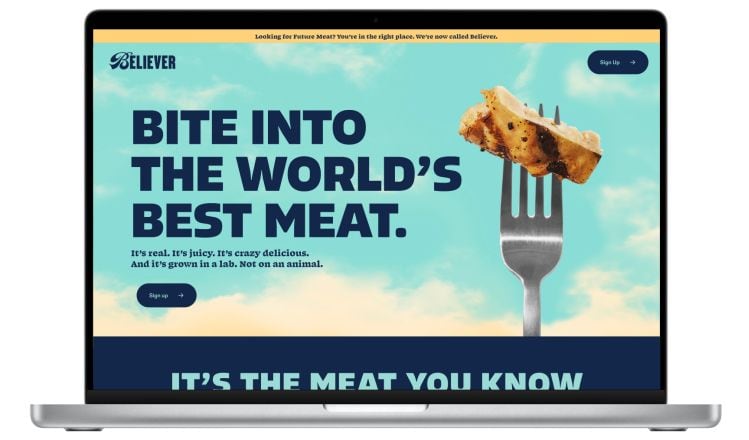
The first wave of products will be hybrids…
Unlike fellow startup Aleph Farms, which is using tissue engineering techniques to make thin steaks by co-culturing cells around edible scaffolding, Believer Meats is growing cells in a bioreactor, harvesting the biomass, and then combining them with plant proteins in a low temperature extrusion process to make finished products on site.
"It’s essentially a high vacuum mixer [combining] the cells and the [plant] protein and extruding them together.
“But the extrusion process runs in lower temperatures, allowing the product to develop the Maillard reaction and fatty acid oxidation during the cooking process itself. This would allow customers to fully experience the grilling of meat products at home."
‘I don't believe in making a $25,000 steak that only Elon Musk can afford’
He added: “I think in the first generation of products… everybody in the field is going to be hybrid. They're going to combine plant proteins for texture, and then animal cells for the flavor and aroma and everything we experience for meat. This is what we are doing as well.
“Even though I have a background in tissue engineering, we're not focused on tissue engineering. I don't believe that tissue engineering is the way to get us where we want to be. And I don't believe in making a $25,000 steak that only Elon Musk can afford. I want my kids to eat our products too.”
But how meaty is the end product if the animal cells haven't matured into, say, muscle fibers as we know them?
“What we're selling is extremely meaty,” insisted Prof. Nahmias. “Texturizing is something the [meat alternatives] industry figured out more than 20 years ago. The texture of the [alt meat] burgers today is perfect. They just don't smell like a [conventional beef] burger and they don’t taste like a burger.”
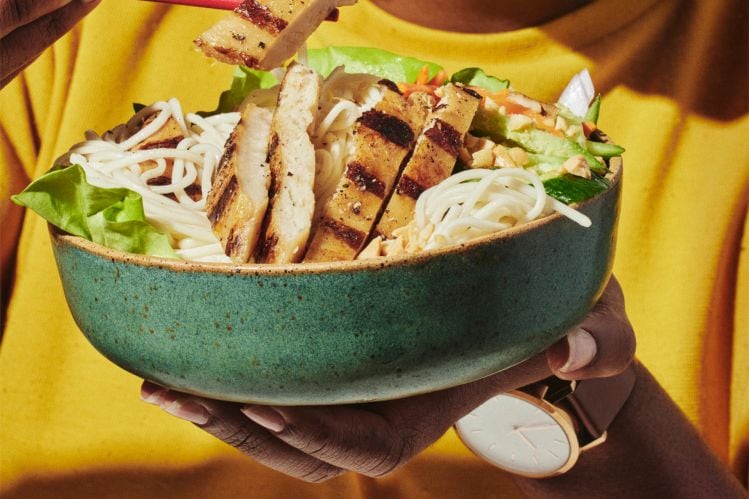
Species: Chicken, lamb, pork, beef
But why launch with chicken, which is already pretty cheap?
“We have chicken and lamb, beef and pork,” said Prof. Nahmias. “The technology is applicable to all species. The interesting thing is that it's easier to immortalize small animals than large animals. Once you immortalize them, they will grow forever, so our chicken cells went through more than 1,000 population doublings.
"That means each cell line produced from a single chicken can produce more than two times 10 to the power of 800 kilograms... it's more than the mass of the planet."
Sustainability: ‘For chicken we believe we can reduce carbon emissions by more than 40% as well as water use by more than 90%’
Prospective lifecycle assessment suggests that cultivated meat is going to use less land less water and fewer greenhouse gases. But since nobody's producing it at scale yet, how can we be sure?
According to Prof. Nahmias: “So we don’t know, but we can model it. There are a few very good technical economic assessments out there, and if you take those numbers, and use real world data from our production line that you can see behind me, you can essentially estimate or extrapolate the final environmental impact of a large-scale facility.
“And the first number that we get is really, really good not only for beef, but also for chicken where we believe we can reduce carbon emissions by more than 40% as well as water use by more than 90%.”
Regulatory pathway: ‘The unknown is not whether it will be approved, but when’
The United States is likely to be Believer Meats' first market, although it is looking at other territories as well, he said.
“The main unknown right now is regulatory approval. It seems like the FDA process is very well in its stride. There are no big challenges left; we already demonstrated safety, demonstrated plans to ensure the health of the product and the lines. But there are questions about how much time this is going to take and how much time the USDA will need to decide on the label?
“The unknown is not whether it will be approved, but when. When exactly is that going to happen? Towards the end of 2023? Somewhere in the middle of 2024? We don't really know, because the regulatory agencies themselves don’t know.”
‘We can tailor the nutritional profile’
Asked whether it makes sense to reproduce (albeit more ethically and sustainably) a product that many commentators believe is fundamentally unhealthy (processed meats) rather than encouraging consumers to reduce meat consumption or switch to plant-based alternatives, he said cultivated meat can be both safer and healthier than slaughtered meat:
“I want to increase the amount of omega-3s in the product. I want to have a chicken breast that is healthier than salmon. I want to significantly reduce the amount of saturated fat in the product because I don't want it to be as fatty as regular meat.
“We can tailor the nutritional profile and we can make sure that customers get a lot more than they expect.”
Antibiotic-free?
Meanwhile, he claimed, cell-cultured meat does not carry the same risks of bacterial contamination, while commercial-scale production of cultured meat will be possible without antibiotics.
“The use of antibiotics in animal agriculture is essentially contributing to about 90% of the antibiotic use in the world and that leads to antibiotic resistant bacteria, which we're all dealing with right now. This is a major concern and this is why it was a priority for us to completely remove antibiotics from our system.”
Bacteria and viruses
As for bacteria, he said, “my concern is not only pathogenic bacteria such as salmonella, which is a huge problem… but also viruses. We're just recovering from the COVID pandemic and influenza is just around the corner.
"All of these viruses are jumping to humans from animals. And one of the very cool things that we developed here is a rapid sequencing approach to see which viruses appear in ourselves essentially making sure that we exclude all of the animal pathogens, but all of the human pathogens as well.
“So, we're not talking about testing like three or four or five viruses that traditional agriculture is testing. We have the full sequence of the cells, so we can exclude everything. Hopefully, when this technology takes hold, and we replace a significant fraction of the industry, we can completely prevent massive outbreaks of porcine influenza or chicken flu for the coming generations.”
*Checkout FoodNavigator-USA in the coming days to see more coverage of leading Israeli food tech startups...
Interested in cell-cultured (a.k.a. cultivated) meat?
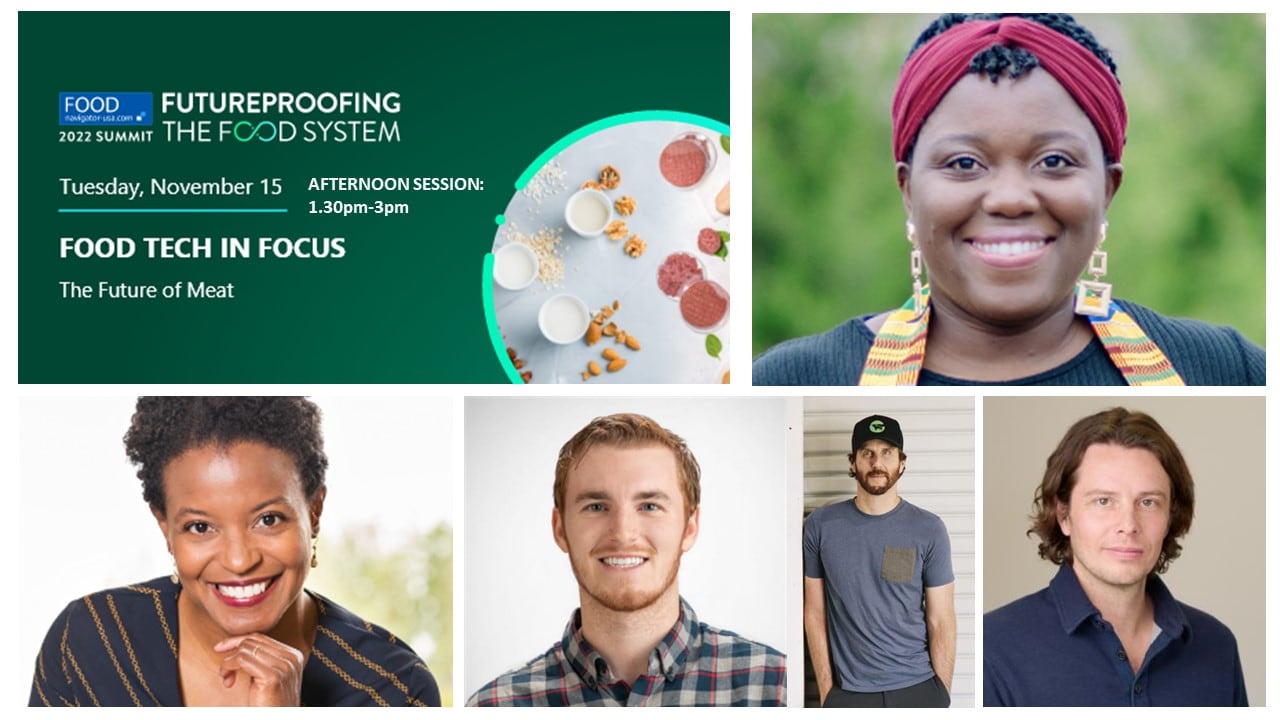
Sign up for 'FOOD TECH IN FOCUS: The Future of Meat' - the second session in this week's Futureproofing the Food System virtual event, starting Tuesday Nov 15, which opens with a fireside chat on cultivated meat with Dr Elliot Swartz, lead scientist, cultivated meat, The Good Food Institute. REGISTER HERE (IT'S FREE)!
1.30pm-3pm Central time
FIRESIDE CHAT: Cell-cultured (a.k.a. ‘cultivated’) meat: Foodtech fantasy or the future of meat?
Dr Elliot Swartz, lead scientist, cultivated meat, The Good Food Institute and Elaine Watson, senior editor, FoodNavigator-USA
Growing meat from cells in bioreactors instead of living breathing animals should logically be more efficient, as resources are spent on growing only the cells that make up the meat product rather than keeping an animal alive. So is cultivated meat a no brainer, or does the technology face ‘intractable’ problems at food scale?
PANEL: Meat 2.0: With weakening sales in the alt-meat segment prompting some serious soul-searching, what does the future hold for meat alternatives, how do the available options stack up, what will distinguish the winners from the losers in the category, and how do consumers feel about the next generation of meat?
- Ethan Brown, founder and CEO, Beyond Meat
- Dr Lisa Dyson, founder and CEO, Air Protein
- Dr Tyler Huggins, co-founder, Meati Foods
- Abena Foli, head of regulatory affairs, Orbillion Bio

